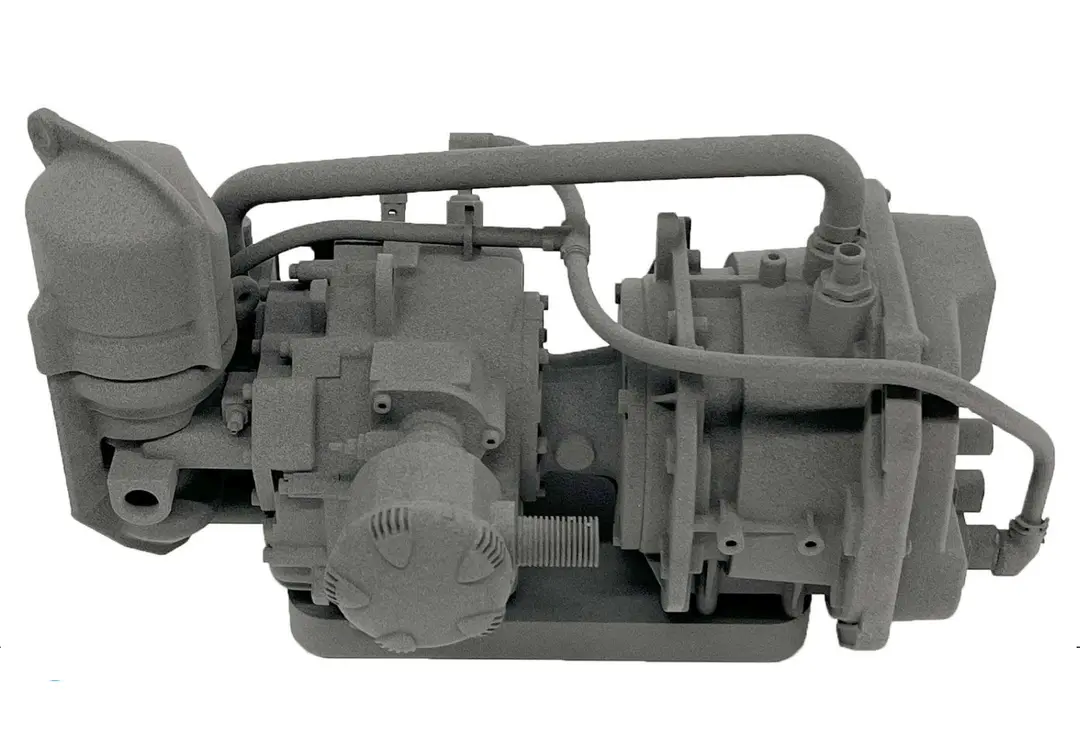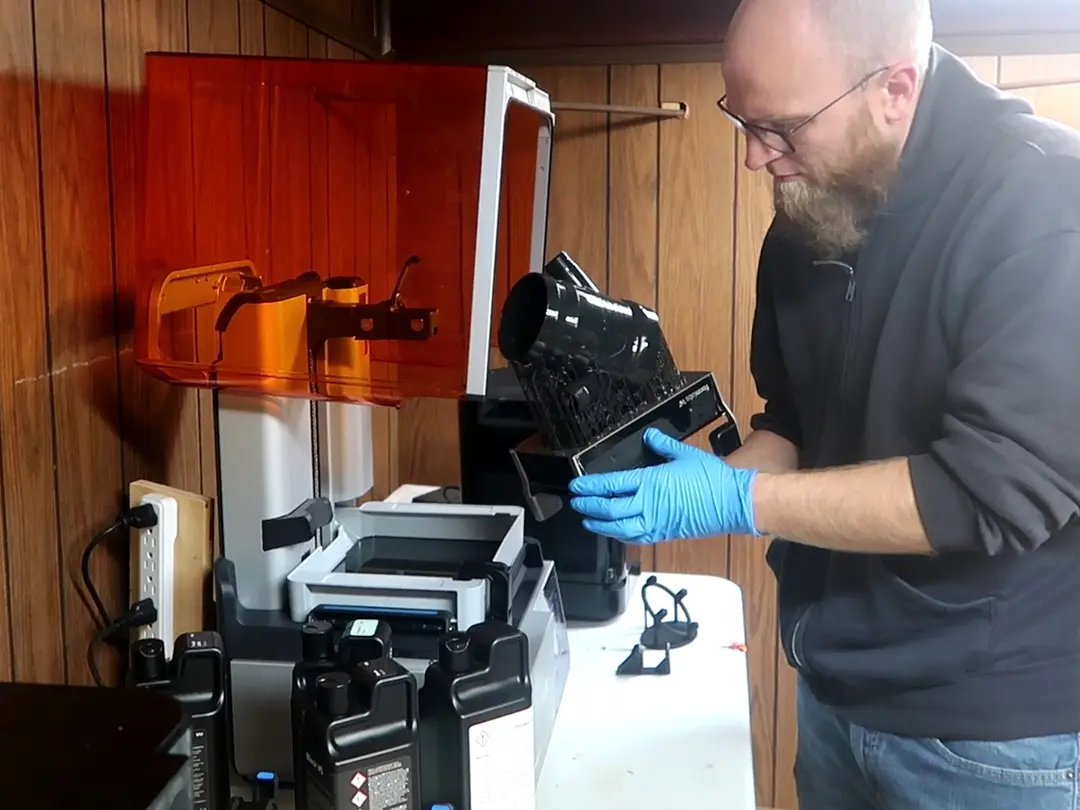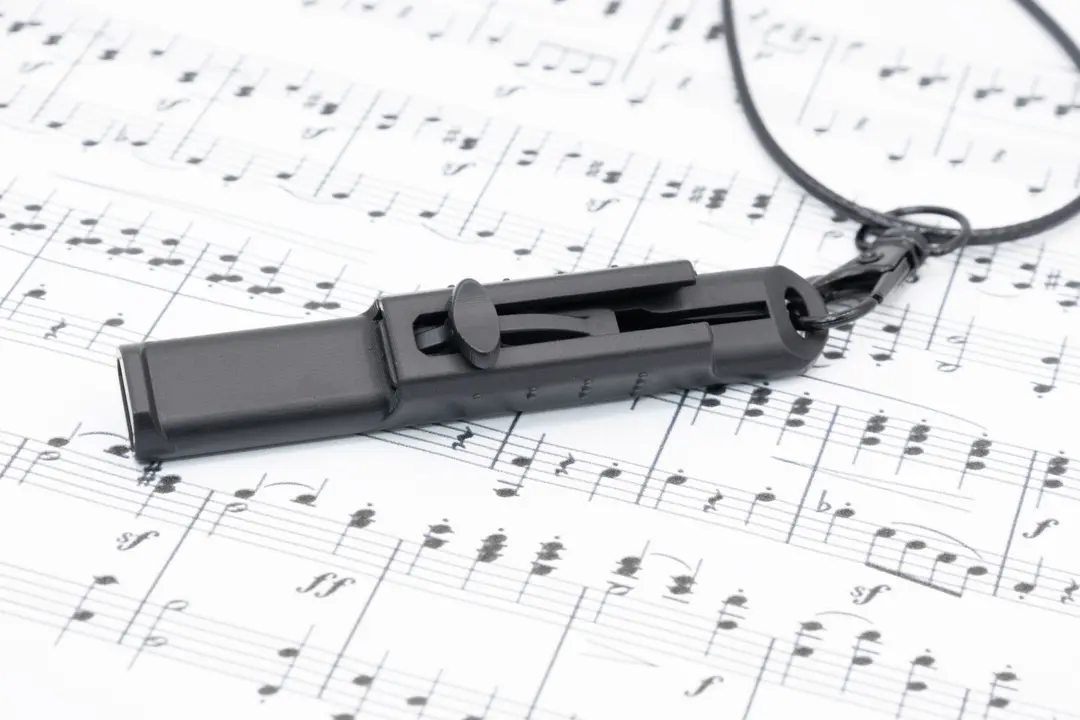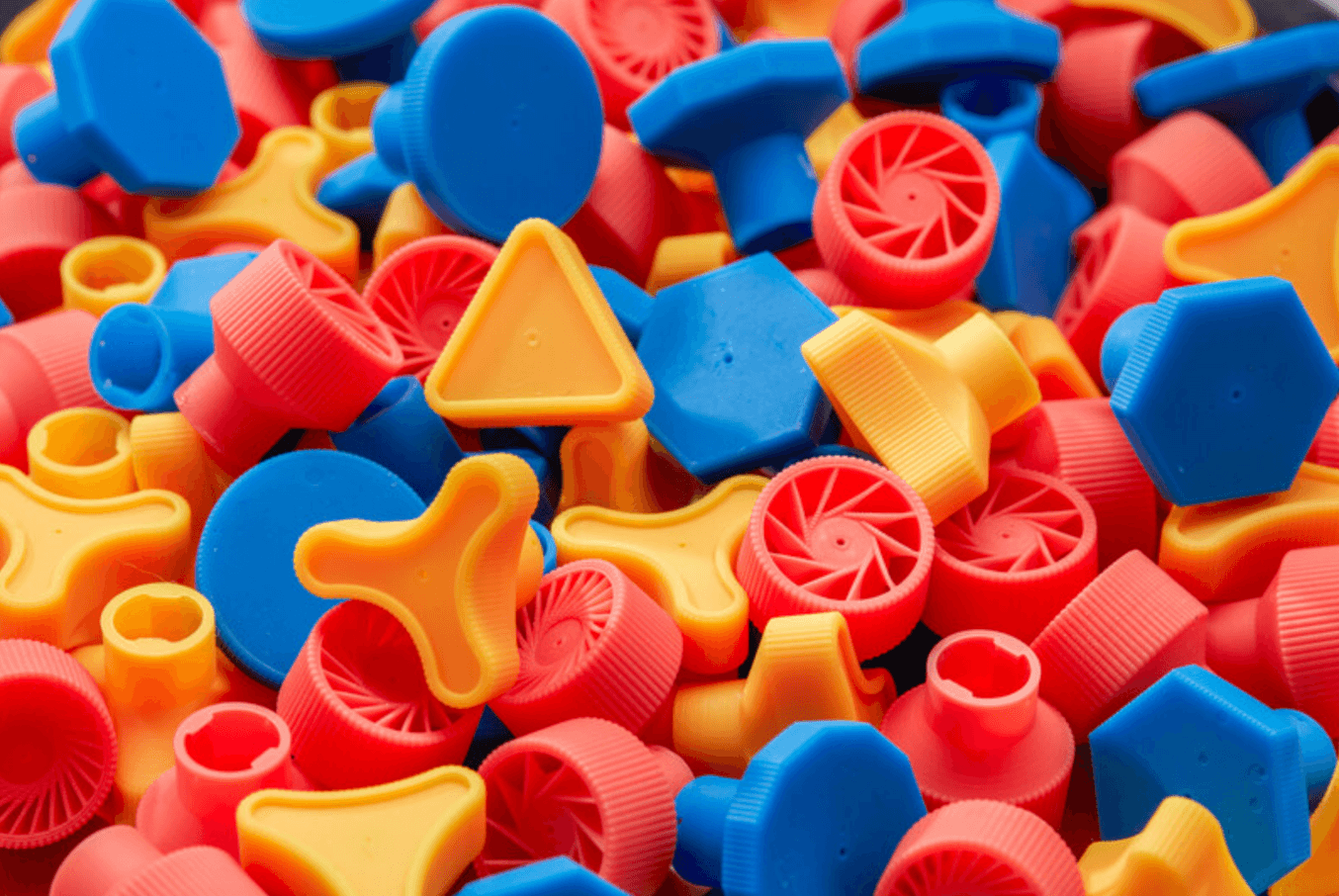
The Digital Factory is a conference about advanced manufacturing: how companies are using recent innovations in technology to set new standards for efficiency and develop new best practices. Often these high-tech powered initiatives happen deep within large organizations, in R&D teams or special projects groups. The Digital Factory is a time for practitioners and executives to come together to surface and exchange ideas and see where Industry 4.0 projects in other domains have been successful.
At the 2019 conference in Boston, we set out to show how some of those innovations and best practices come together via an interactive demo that put attendees through a modern assembly process, combining technologies from Amazon Web Services, Tulip, Vention, RightHand Robotics, and of course, Formlabs.
Attendees were invited to configure and build a special edition of The Public Radio, a single-station radio developed by Spencer Wright and Zach Dunham. This post breaks down how we used the material properties of stereolithography (SLA) resins and the scalability of the Form 3 3D printer to produce plastic parts and assemblies just in time, alongside other smart factory technologies like made-to-order workbenches from Vention and sensors and software from Tulip and AWS. We’ll also share some of our design for manufacturing with SLA part design process and how those steps can help you optimize throughput and reduce post processing time.
The Pop-Up Factory Workflow
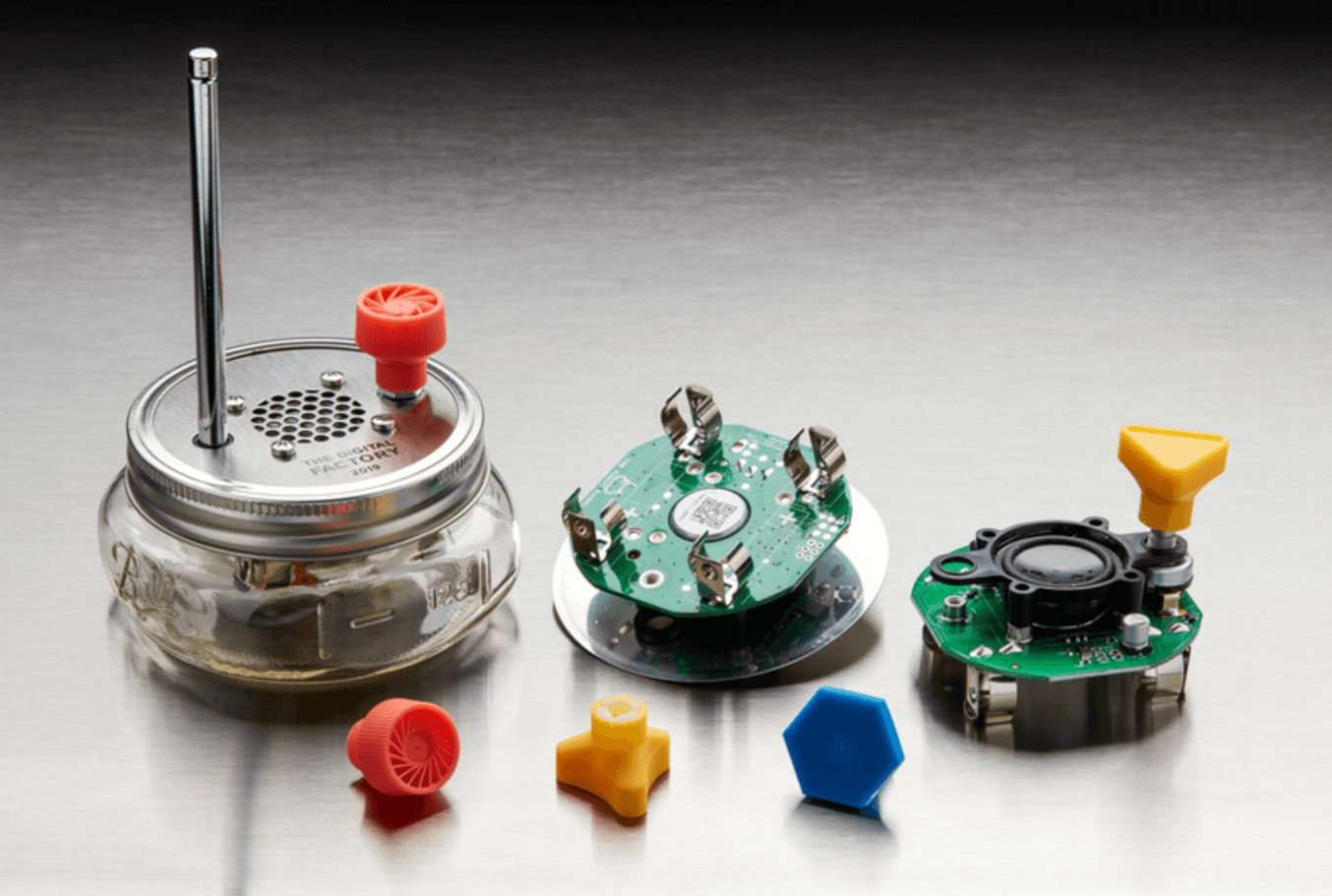
The process starts with a Tulip-powered kiosk, where you select a radio station and the style of knob you want. A label printer at the kiosk dispenses a custom QR code sticker, which is then scanned at the Tulip workbenches.
Each workbench is stocked with 3D printed knob assemblies, batteries, antennas, and radio subassemblies, along with familiar manufacturing tools like a programming jig created with laser cut and 3D printed parts. The workstation display guides you through each step, and sensors log your actions to ensure nothing is missed and inventory changes are tracked accurately up to the minute.
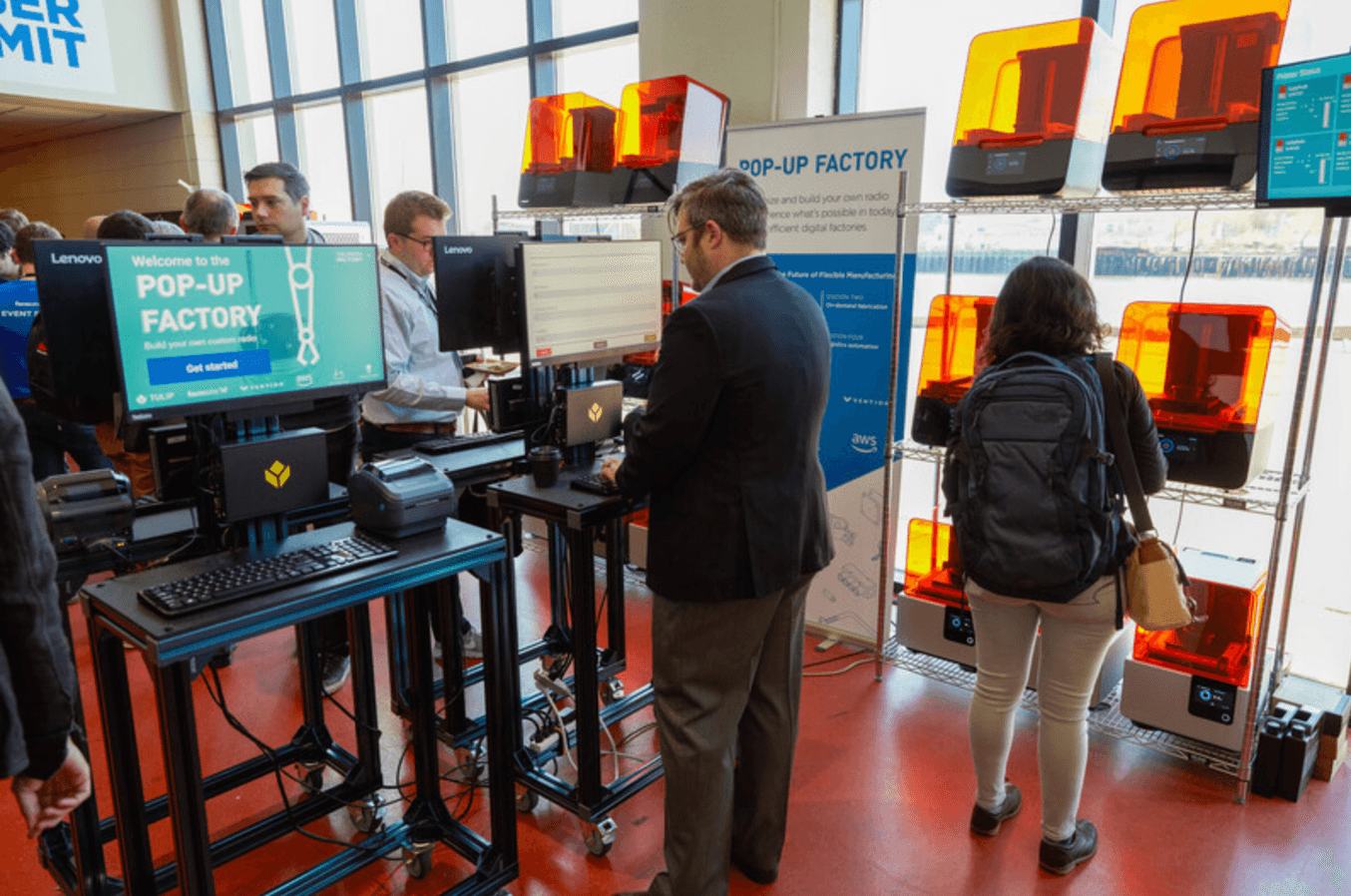
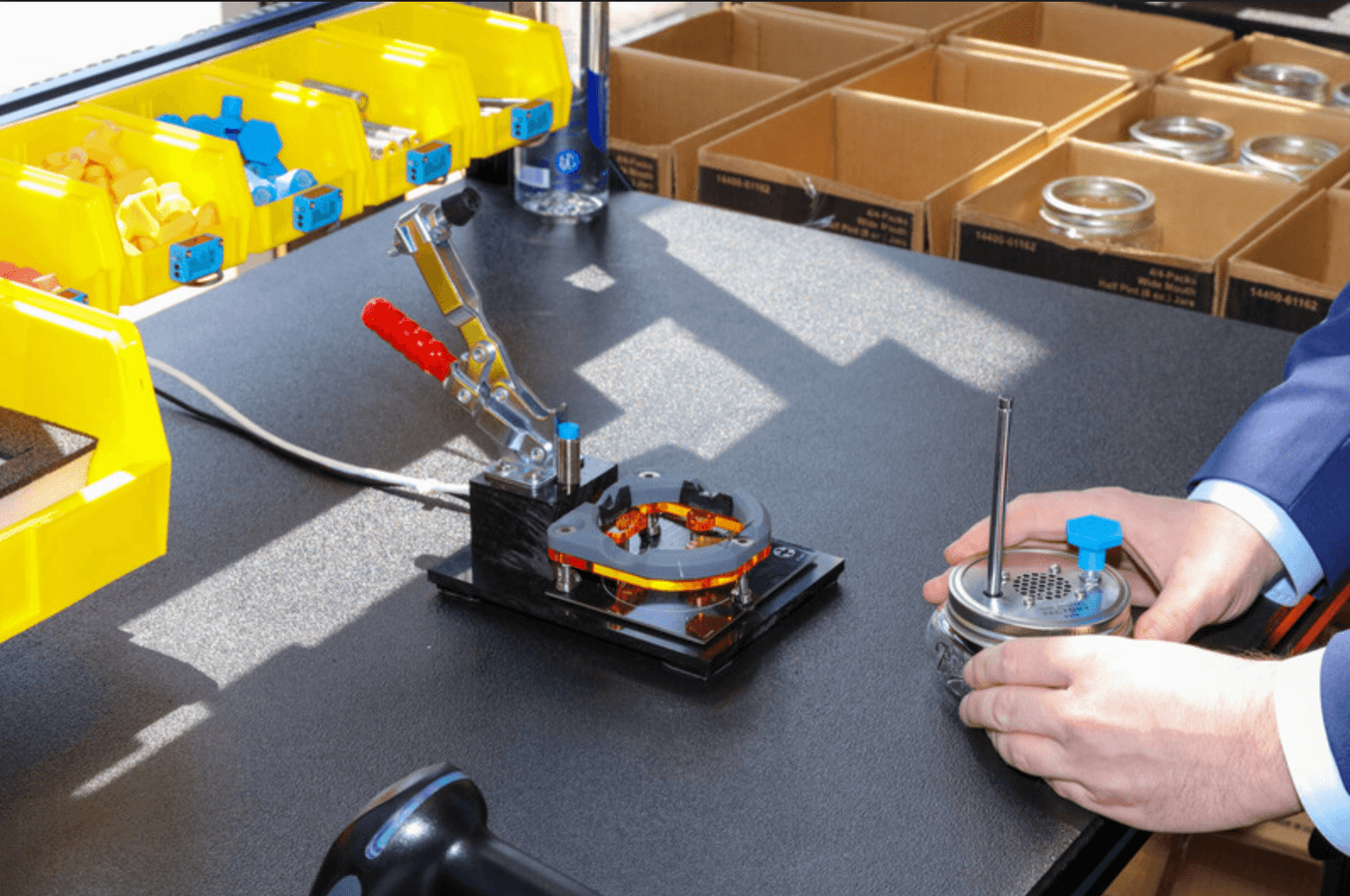
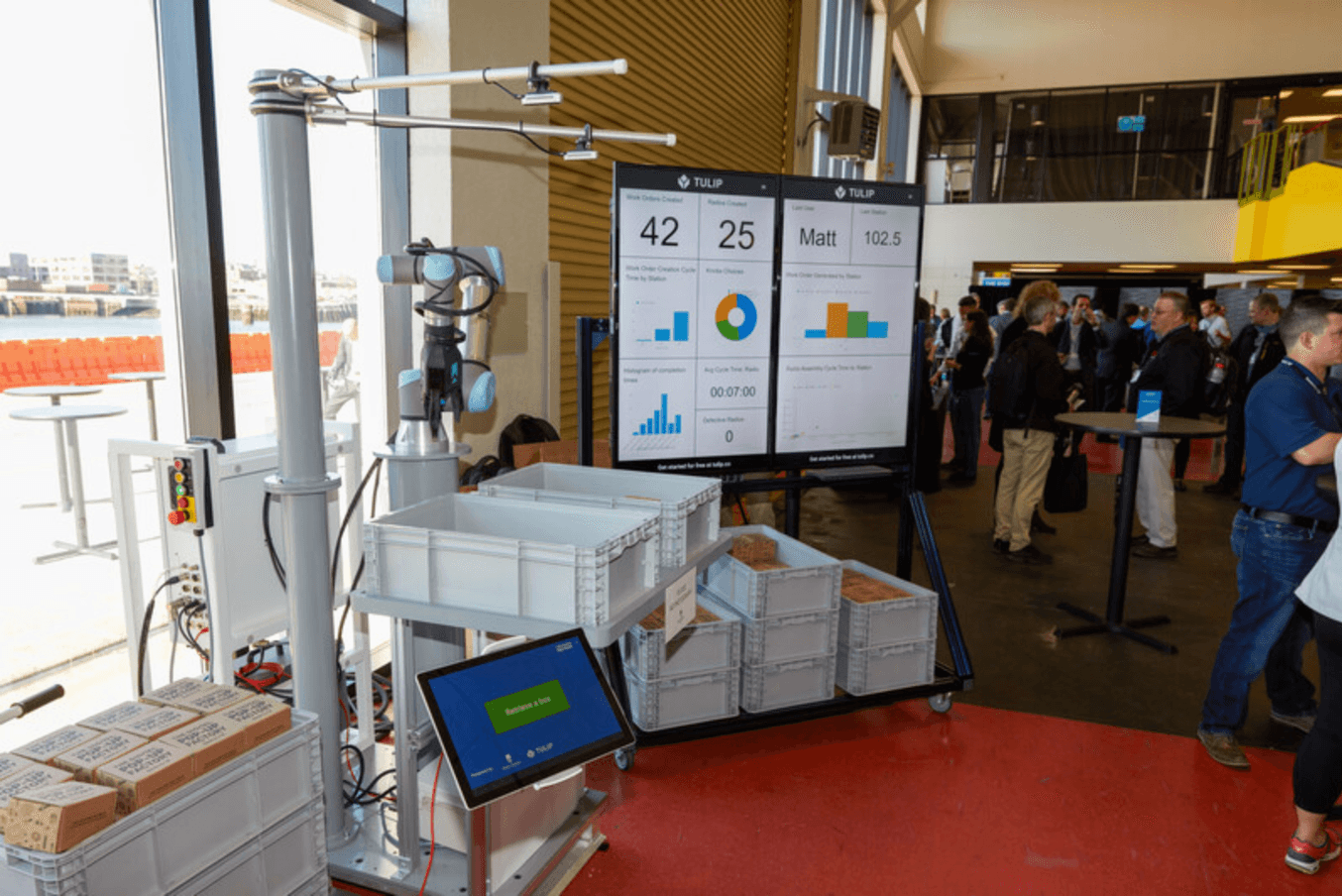
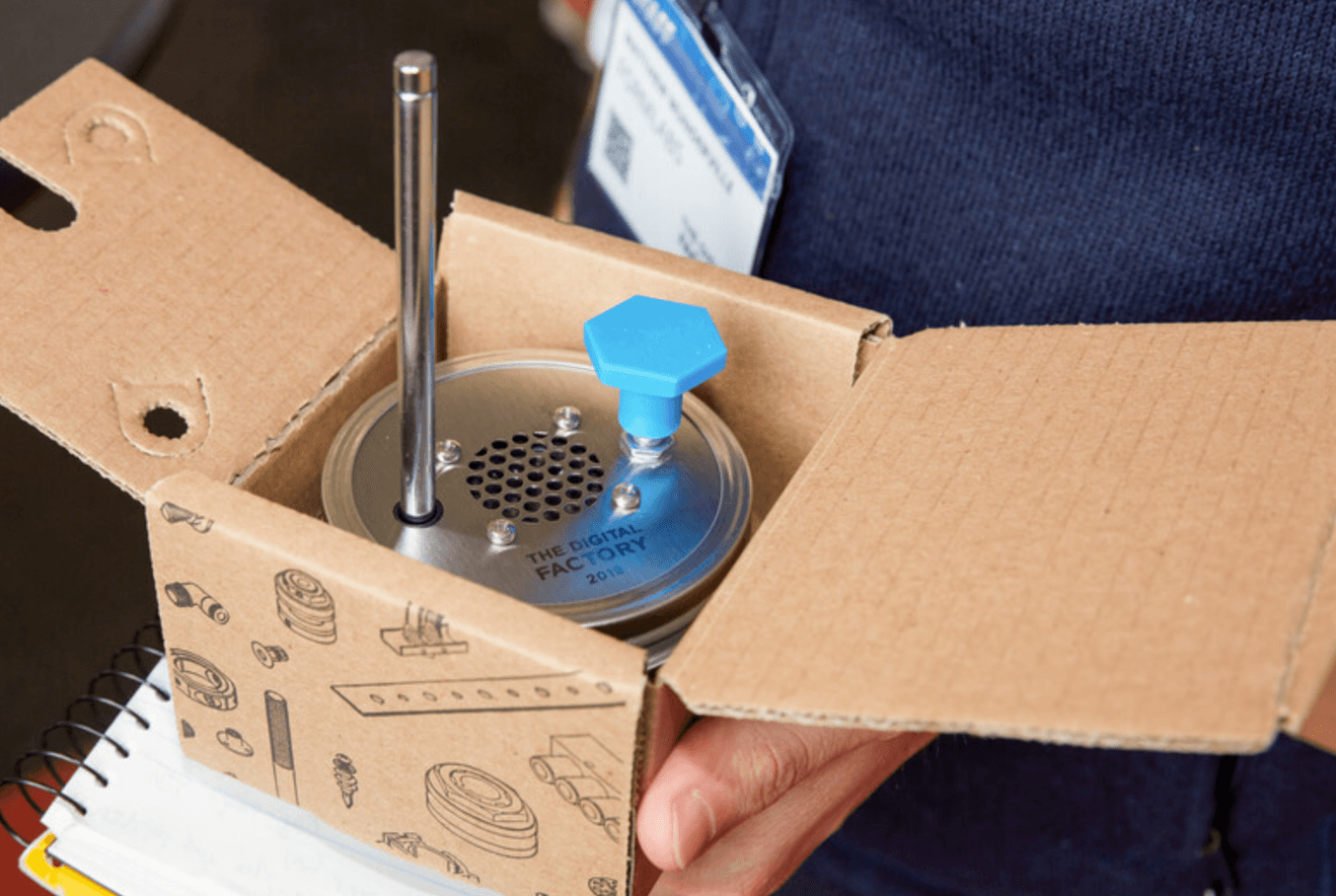
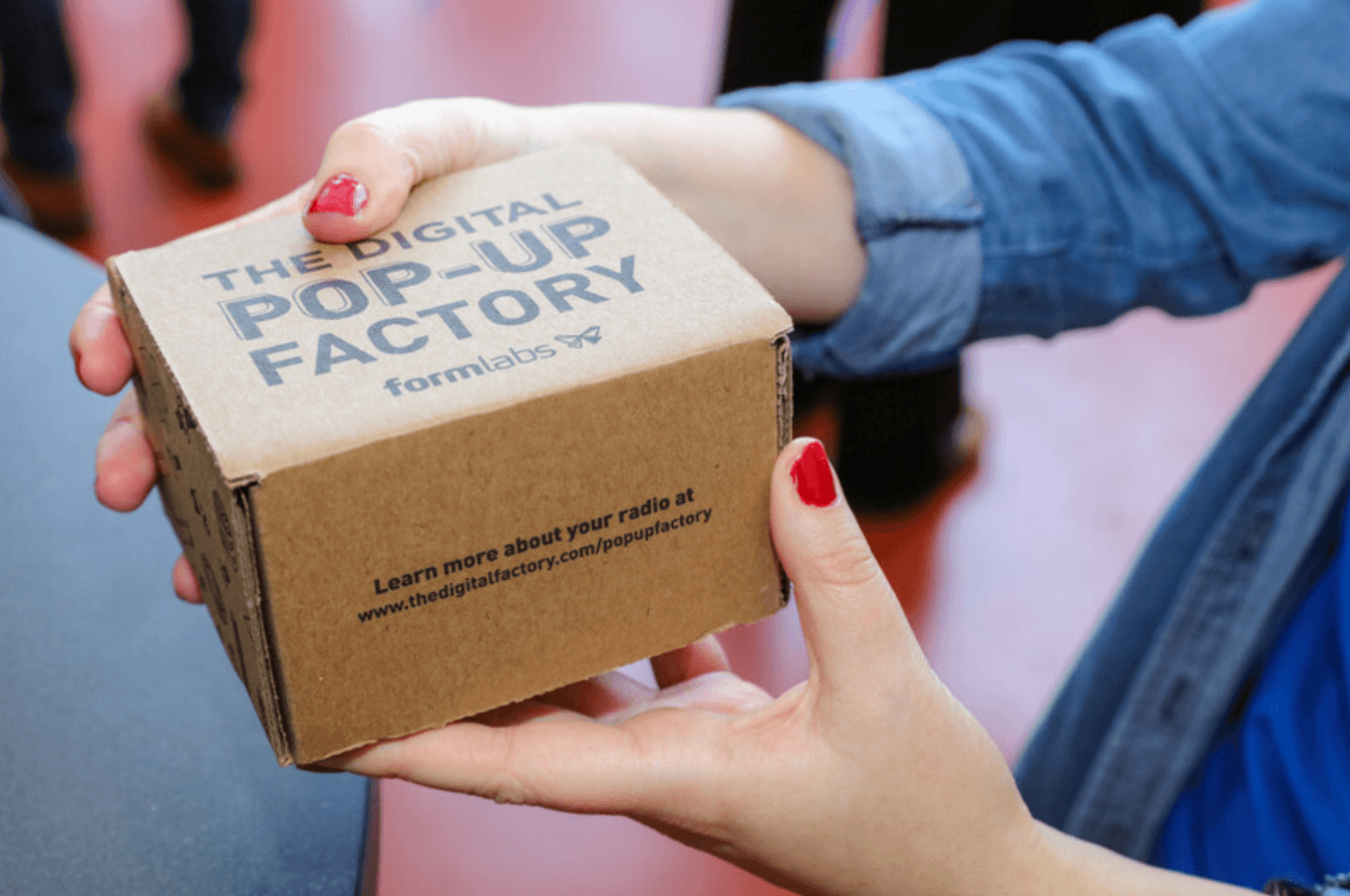
A completed Digital Factory edition of The Public Radio in its box.
Design for Additive Manufacturing and Assembly
The 3D printed knobs needed to meet certain criteria across aesthetic and functional requirements:
-
We knew we wanted to add bright, colorful accents to The Public Radio and provide multiple color options.
-
We wanted to demonstrate the flexibility of printing parts on demand by offering 12 different unique forms, so that if you built a radio with a red knob in the morning vs. the afternoon, you would have a different design.
-
We needed a design that would tightly grip the d-shaft of The Public Radio and stay in place through use and abuse.
-
We needed the pressure required to install the knob during assembly to be within standard ‘hand pressure’ range so as to not slow down the assembly process or require additional tools.
To meet those requirements, we used a combination of two resins: our Color Kit Resin, which would allow us to get a wide range of color options, and Durable Resin, an engineering material with high impact strength and good elongation.
We needed elongation for the ribs in the part design to effectively grip the d shaft of The Public Radio but move out of the way during installation without requiring excessive pressure.
The Durable Resin insert also needed to capture the Color Kit Resin exterior and prevent it from spinning freely.
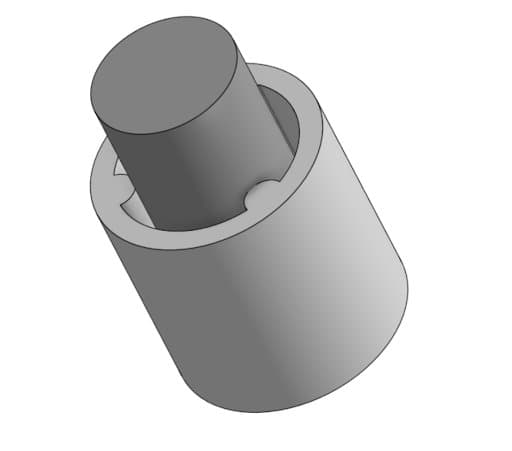
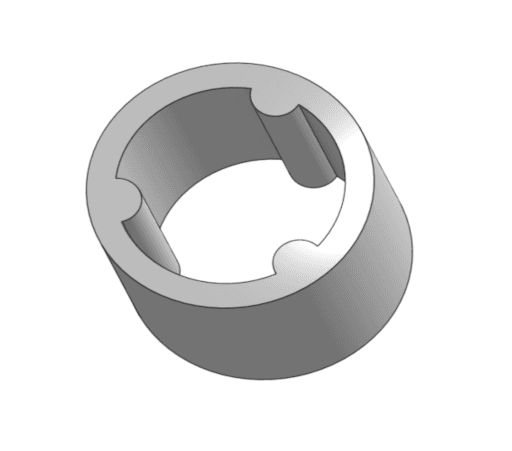
Example of a typical crush rib geometry for plastic parts
Moving to Production
After the designs were validated functionally, we made some small adjustments to tune them for production. All parts of the printed knob assemblies needed to be self supporting, easy to remove from the build platform, and nest as densely as possible to minimize the number of builds required. Additionally, since the knob geometries are essentially a closed tube, tiny vent holes were added prevent cupping.
Similarly, the Durable Resin inserts were notched at their bases to prevent cupping and aid with part removal.
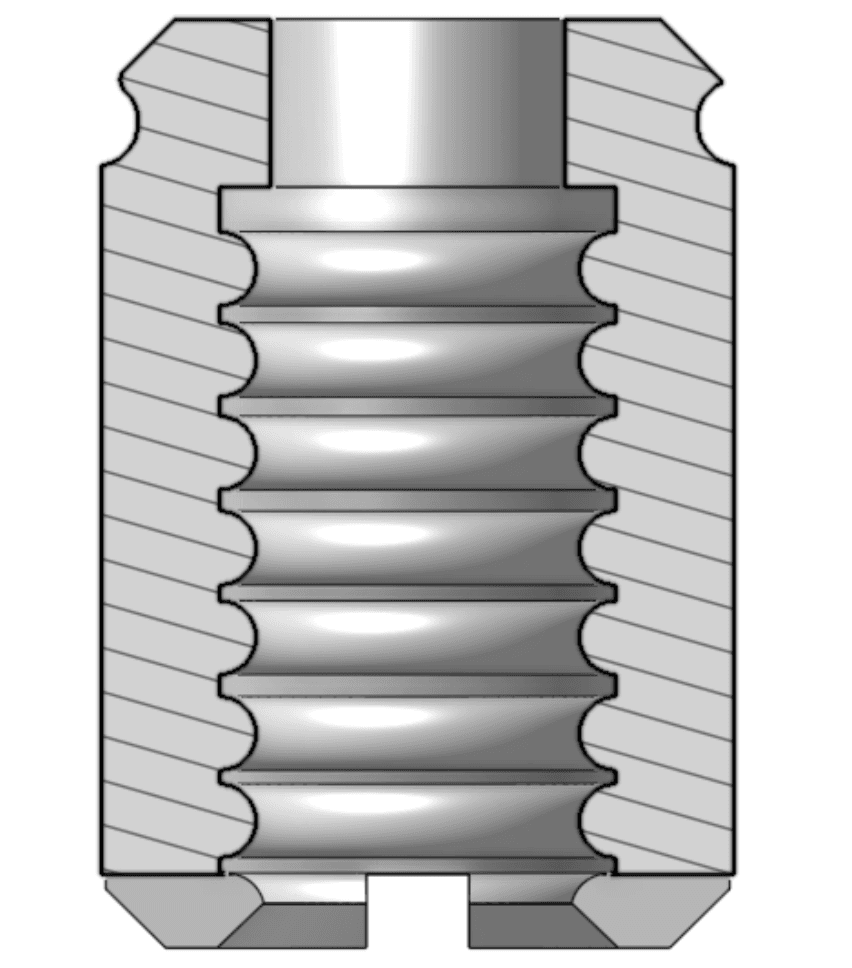
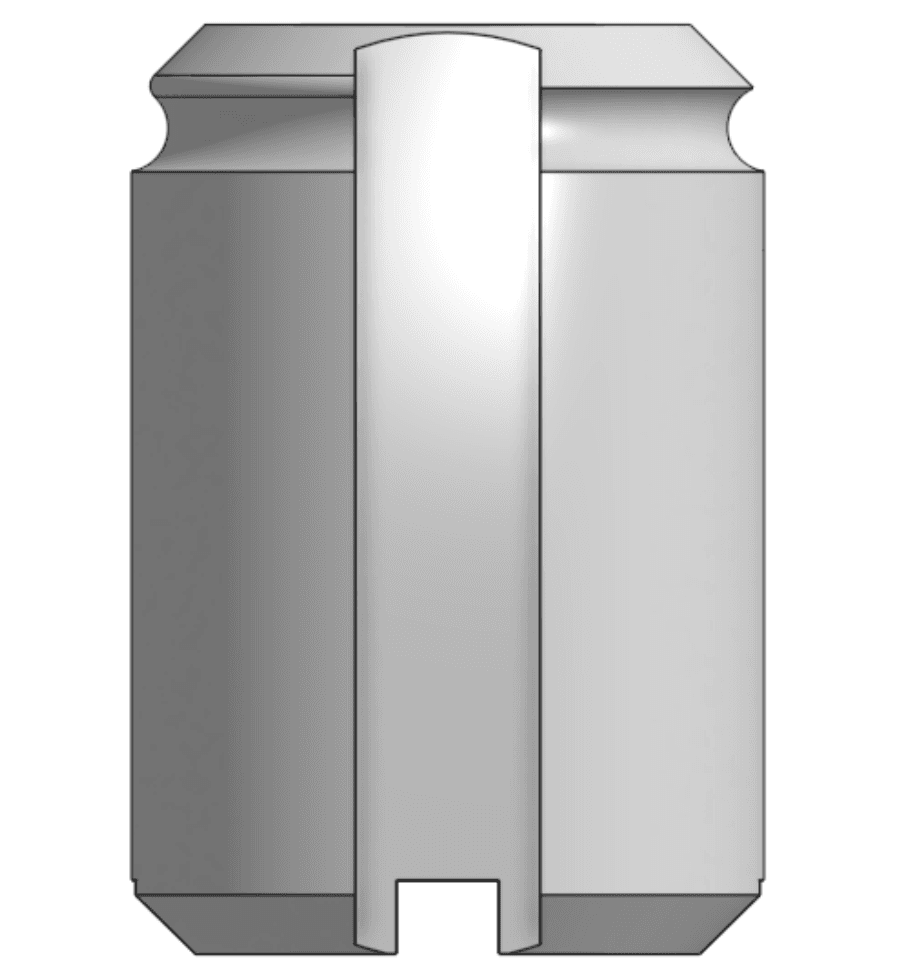
Durable Resin insert design for manufacturability and assembly features: notched and chamfered base to aid part removal, annular snap fit top and grooves to attach knob and prevent rotation.
The Durable Resin inserts packed onto platforms quite densely, coming in at 81 pieces per build. Color Kit Resin, with their larger average diameter, netted fewer parts per build, at 30-40 per build depending on design.
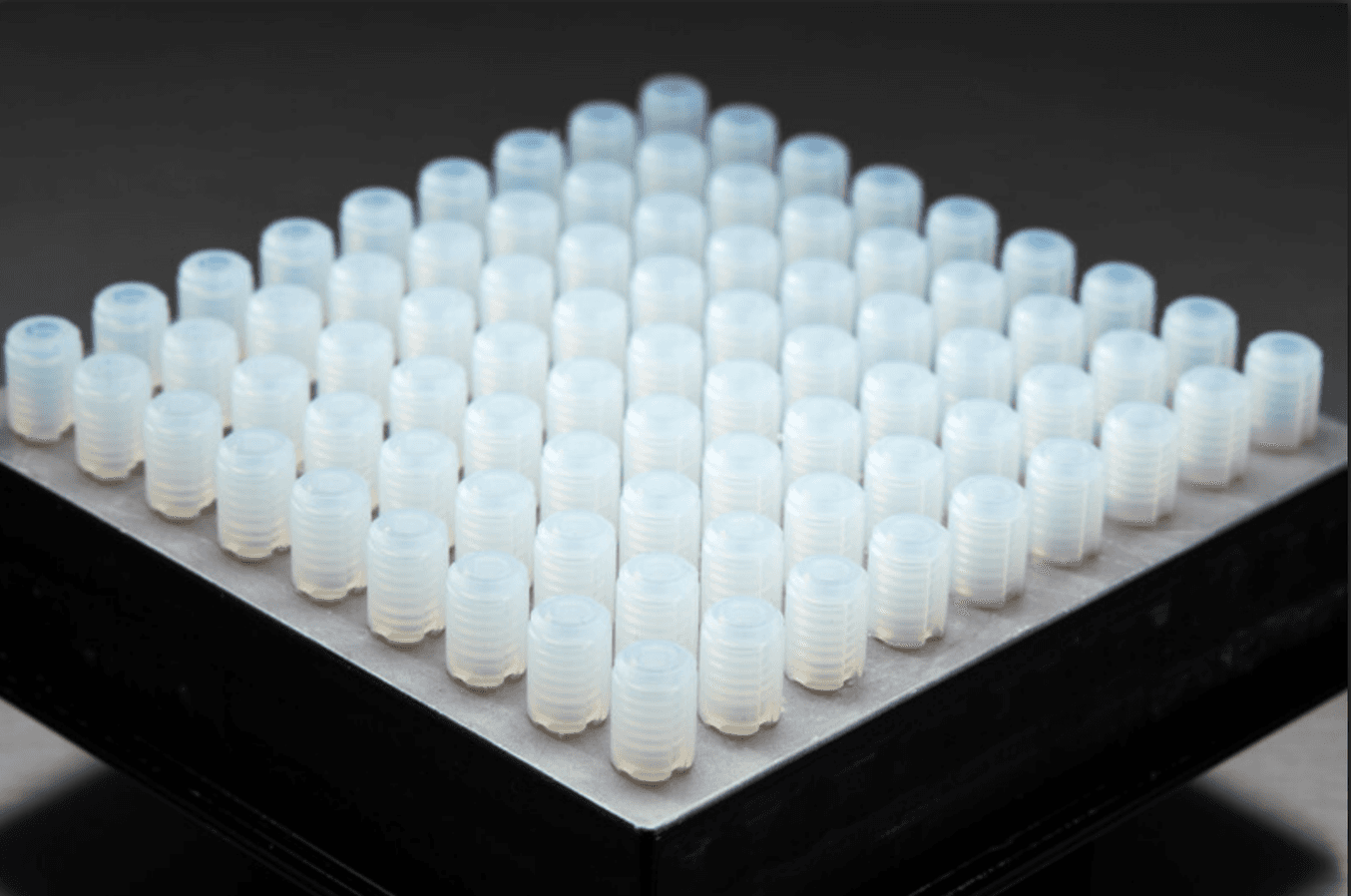
With 600 radio kits ready for assembly, we wanted to stock at least 400 versions of each color option. With 400 red knobs, 400 blue knobs, and 400 yellow knobs, we also needed one durable insert per knob, bringing the total part count for the two day demo to 2400 printed pieces.
In total, we needed 55 builds to create the 2,400 parts to net us 1,200 knob assemblies. We distributed this workload across internal printers and on-site demo printers so that we would be starting out the morning of The Digital Factory with plenty of knob assemblies already in inventory and workstations.
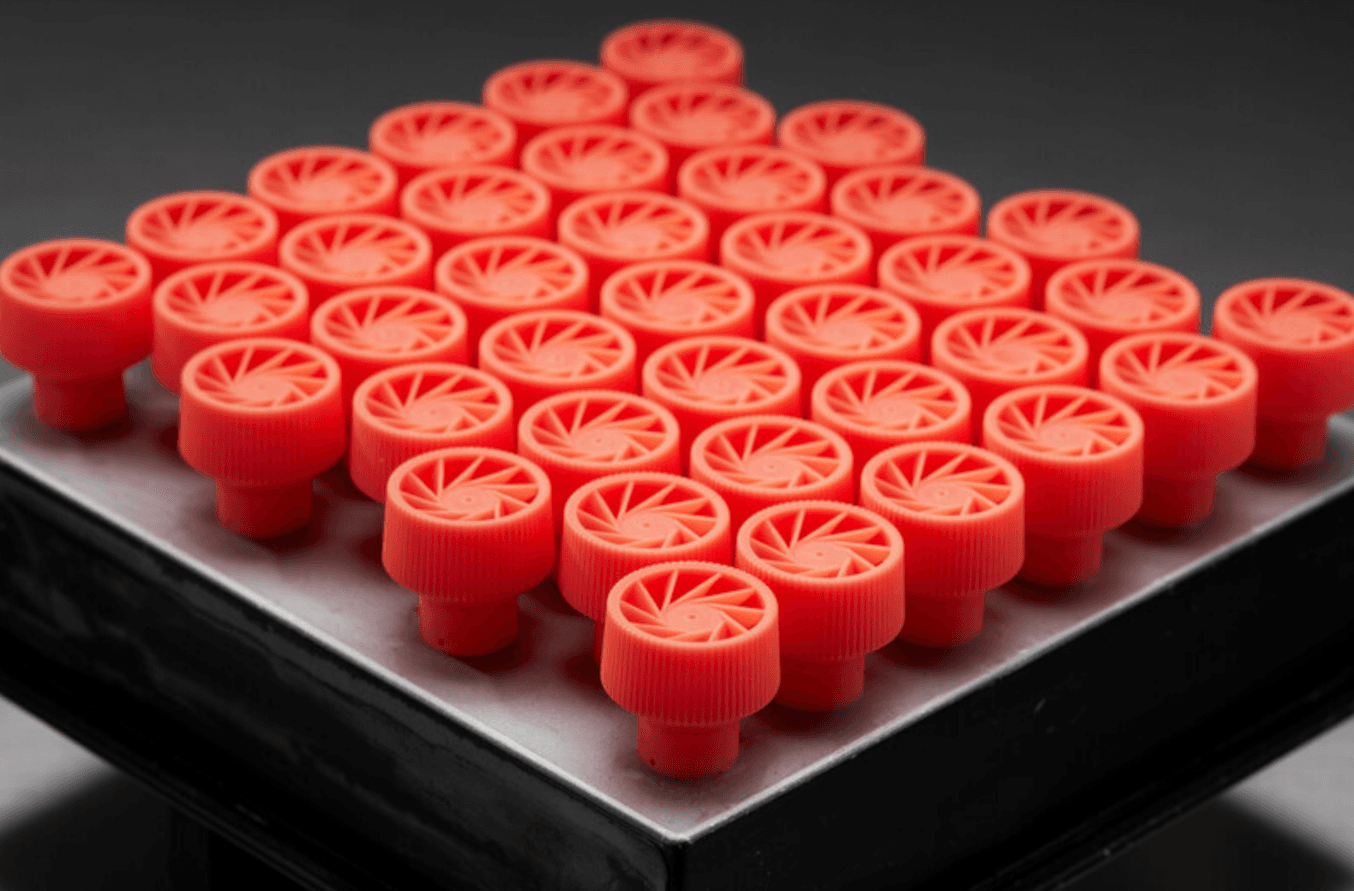
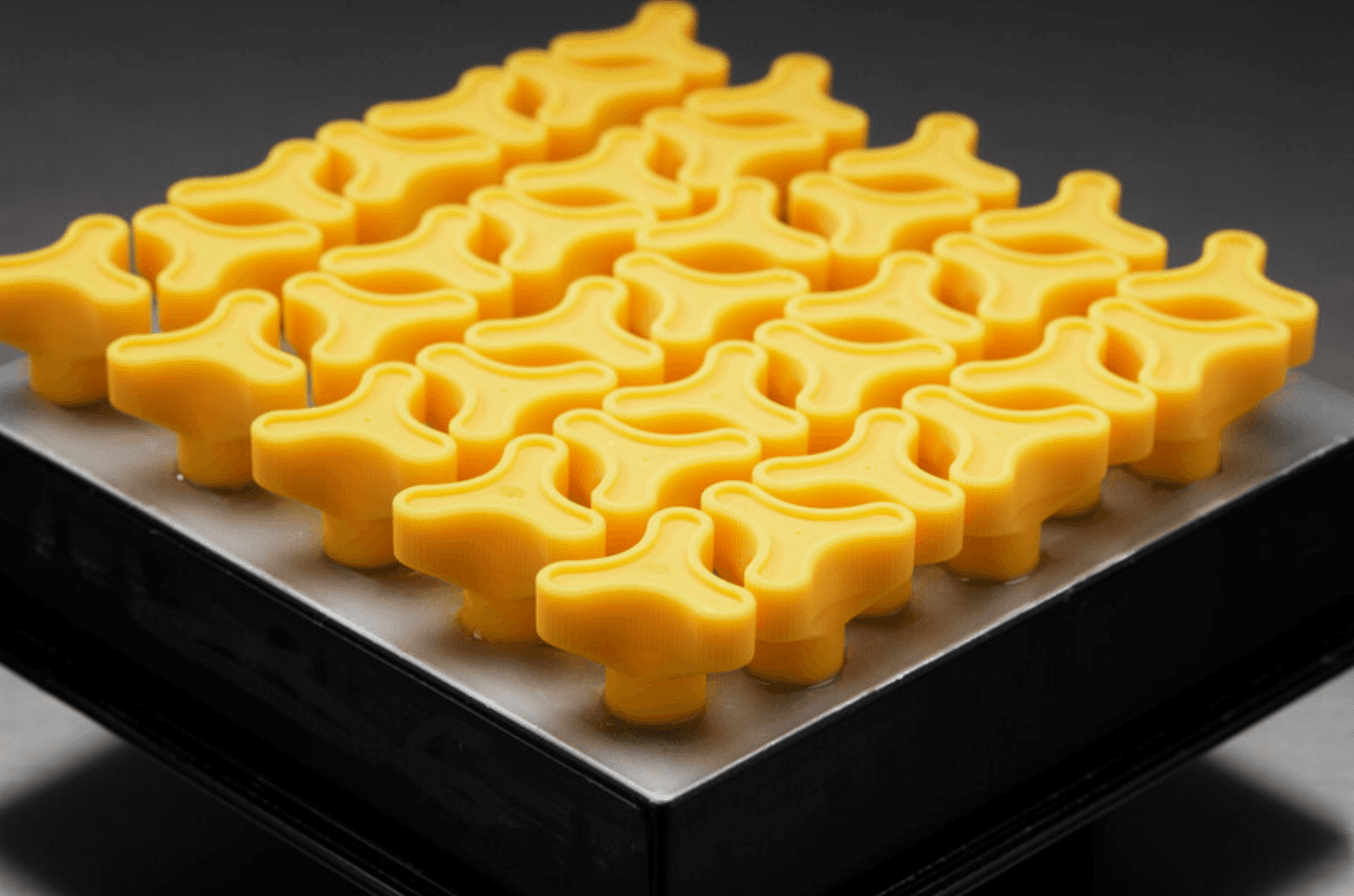
Learning From Demand and Creating Responsive Workflows
Information about product demand like color preference being recorded in real time, along with the tools to make parts on site creates an opportunity for a tightly integrated loop of supply and demand, reducing overruns and wasted goods sitting in inventory. Predicting color demand for consumer products is notoriously difficult, and many companies spend significant effort on developing tools and techniques to improve forecasting accuracy.
During our two-day Pop-Up Factory, Sonic Red was far and away the winning color, about twice as popular as the Blue or Mellow Yellow options. In future pop-ups, we could change production scheduling to reflect this, or run another experiment, like using the same knob geometry across all three colors to better understand customer behavior.
Today’s manufacturers face more pressure than ever to be flexible, but also to be hyper-efficient. The Pop-Up Factory demo highlights how smart factory technologies like sensors and software pair perfectly with agile fabrication methods like 3D printing.
To read more about how today’s leading manufacturers are leveraging 3D printing to innovate, read some of our case studies on how Google, New Balance, and Ashley Furniture are using Formlabs 3D printers and resins to re-engineer their manufacturing processes.
